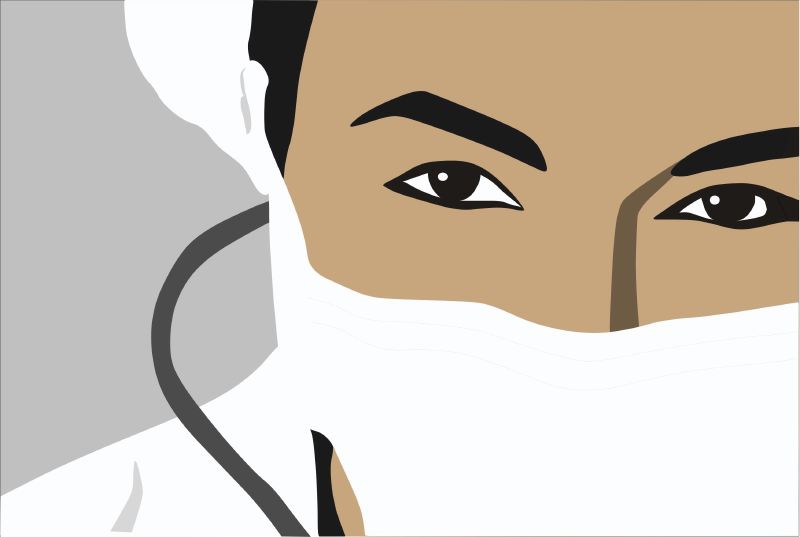
Cognitive distortions are exaggerated or irrational thoughts that we have. They often cause us to feel stressed, worried and unhappy. As medical students and doctors, it is important to know how to recognize and deal with these thoughts. In Part 2 of this article, by learning to tackle common cognitive distortions, you will be empowered to manage your amazing mind and smooth over the bumps in the road of a career in medicine.
Cognitive comes from the Latin cognit(us), meaning, ‘known’. Distortion means the act of twisting or altering something out of its true, natural, or original state.
These ways of altered thinking are also a type of cognitive bias. These types of biases occur when your brain tends to think in a certain way — a way that isn’t always accurate or helpful. Cognitive distortions are different from cognitive errors because they are not necessarily inaccurate. A cognitive distortion is a thought pattern that causes you to see things in an overly negative or distorted way. However, these thoughts aren’t necessarily wrong or incorrect — they just aren’t helpful or useful in certain situations because they cause you to see things too negatively or positively.
These types of biases occur when your brain tends to think in a certain way — a way that isn't always accurate or helpful.
As discussed in Part 1, cognitive distortions can interfere with our decision-making processes, and influence how we feel about ourselves and others. Using these distortions as a weapon against ourselves can be as unhelpful as using them on other people.
It’s important to recognize when we are engaging in cognitive distortions so that we can challenge these thoughts and reframe them in a more realistic and helpful way. By doing so, we can improve our mental health and well-being.
We have already covered six awry ways of thinking, and in this blog we cover another six.
I never have anything interesting to say.
I am a complete failure (for having made one mistake at work or in your personal life).
Black-and-white thinking involves viewing things as either all good or all bad. We think in either/or terms without considering the middle ground. This occurs when we view a situation as 100% right or 100% wrong, with nothing in between. You see it as either a success or a failure with no grey area in between.
People with this cognitive distortion tend to jump to extreme conclusions about their own performance and about events around them. They may also have a tendency to see things as being more black or white than they really are.
A person with this cognitive distortion might believe that if they don’t do something perfectly then they have done it badly and there is no point in doing it at all. This person may also view himself/herself as being a failure if he/she doesn’t perform well on an exam, for example.
This distorted view of “all-or-nothing” thinking is a way to avoid the uncomfortable feeling that you don’t have full control over events.
A healthy response to this cognitive distortion would be to try to see things in a more balanced and nuanced way. Instead of seeing things in black-and-white terms, try to consider the different factors that might be involved and the various perspectives that could be taken.
In life, things are rarely 0% or 100%; there are many many (almost an infinity, really) shades of grey between black and white. People, situations, things do not fall neatly into boxes.
My cholesterol is going to be sky-high.
I’m going to fail my exam because I didn’t revise enough.
This cognitive distortion involves predicting the future in a negative way, without considering the possibility that things might turn out differently; you predict a negative outcome and believe that it will definitely happen. You may use fortune-telling to justify your negative feelings or beliefs about yourself, other people or the world. You think something bad will happen, even though there is no evidence to support this belief.
You may also predict that certain events will lead to other negative outcomes, even if there is no evidence to support this belief. For example: “If I don’t pass this exam then I am not smart enough to get into university.”
A healthy response to this cognitive distortion would be to recognize that the future is uncertain, and that our predictions are often based on incomplete or biased information. Instead of predicting the future in a negative way, try to focus on the things that you can control, such as preparing for the exam and doing your best.
A healthy response to this cognitive distortion would be to recognize that the future is uncertain, and that our predictions are often based on incomplete or biased information.
This spot on my skin is probably skin cancer; I’ll be dead soon.
Catastrophizing is a type of cognitive distortion in which we automatically assume the worst possible outcome in a given situation. For example, if you have a headache, you might catastrophize by immediately thinking, “I must have a brain tumor.”
This kind of thinking leads to unnecessary anxiety and worry. Catastrophizing is really a combination of (1) all-or-nothing thinking and (2) fortune-telling.
A healthy response to this cognitive distortion would be to recognize that most problems are not as dire as they might seem at first, and that there are often solutions and alternatives that can help. Instead of catastrophizing, try to focus on the facts and evidence, and look for ways to solve the problem or cope with the situation in a positive way.
It was just one healthy meal.
Magnification and minimization is a type of cognitive distortion in which we either exaggerate the importance of something (magnification) or minimize its importance (minimization).
For example, if you get a B on a test, you might magnify its importance by thinking, “I’m such a failure. I’ll never get into a good college now.” On the other hand, you might minimize the importance of the grade by thinking, “It’s just one test. It doesn’t really matter.” Both of these ways of thinking can be harmful and lead to negative emotions.
A healthy response to this cognitive distortion would be to try to see things in a more balanced and realistic way. Instead of magnifying the negative and minimizing the positive, try to recognize the good and bad aspects of a situation, and focus on what you can learn and improve.
All of my coworkers are happier than me.
Here we compare just one part of our performance or situation to another’s, however as we aren’t mind readers nor do we know what is going on in their lives (social media isn’t going to tell the dirty truths), we end up seeing ourselves in a negative light.
Comparison is a type of cognitive distortion in which we compare ourselves to others in a way that is not helpful. For example, if you see a friend who is successful in their career, you might compare yourself to them and think, “I’m not as successful as they are. I’m a failure.” This kind of thinking can lead to feelings of inadequacy and low self-esteem.
In reality, we can never know what another person is going through. And their Insta feed or other social media posts are unlikely to be a true reflection of their inner worlds.
Comparison doesn’t help us except if it motivates us in a healthy way.
I’m not a healthy person.
I’m just not made to be a doctor.
When you catch yourself saying these, can you hear a parental figure’s voice saying it? These often come from sayings repeated so many times that they become habitual ways of responding to certain situations.
This cognitive distortion involves assigning a fixed label to yourself or someone else, based on a single characteristic or event. For example, if you make a mistake at work, you might label yourself as “stupid” or “incompetent.”
This kind of thinking is not only harmful to ourselves, but it can also be harmful to others if we label them based on our own biases and assumptions.
A healthy response to this cognitive distortion would be to recognize that you are more than just one thing, and that your worth as a person is not determined by a single event. Instead of labeling yourself, try to focus on the positive aspects of yourself and your life, and look for ways to improve and learn from any setbacks.
In this article, we have defined with examples another 6 cognitive distortions: labeling; black-and-white thinking; fortune-telling; catastrophising; comparison; and magnification and minimization. We have also given healthy alternative ways of thinking to combat these brain biases.
We hope that the physician reader becomes more aware of their own tendencies towards skewed thinking – we all have them – and start to cultivate more balanced ways of handling the stresses of modern medicine.
A great way of making a habit of understanding our own thought processes is to keep a though diary. Here we note the thought, and linked emotion and behaviors.
We can then apply the lessons from these 2 blogs and write down more rational ways of thinking until these become the default mode.
Physicians wanting addition support are welcome to reach out to our accredited Physicians Anonymous Coaches for more in depth support around self-limiting beliefs and unhelpful thought patterns. Coaching is proven in multiple trials to improve wellbeing, including in medicine. It can enhance your career, too. And coaching does not need to be declared as it’s not mental health treatment.
Further reading: How to recognize and tame your cognitive distortions (Harvard Health Publishing, 2022)
